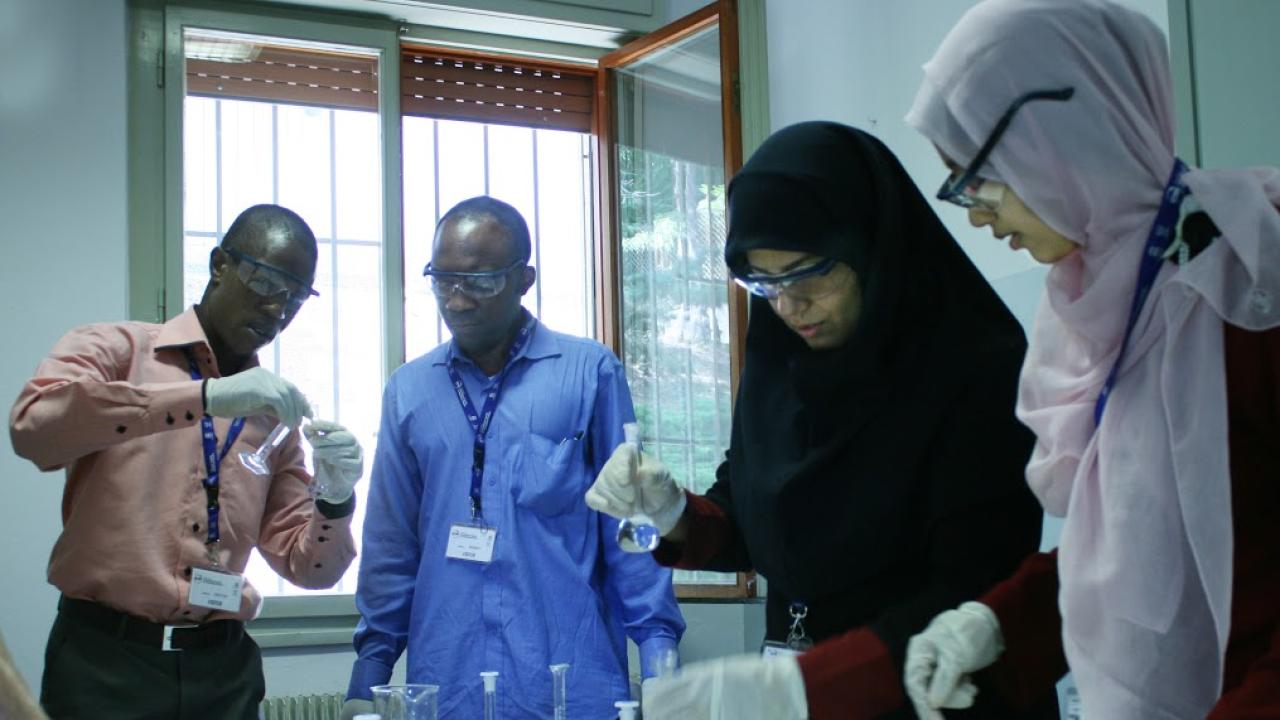
Two minutes and a handful of PowerPoint slides are all the scientists get in order to convince their colleagues to visit their research posters. After that, they'll be cut off by the audience's applause.
Many a scientist would be hard-pressed to give such a concise, accessible, and intriguing introduction to her research. But at the signature "Snapshot" session of the sixth Hands-On School in Complex Systems, early career scientists from 25 developing countries deliver smooth and well-rehearsed pitches for the colorful and data-filled posters hanging outside the lecture hall.
Preparing posters and speaking about research in a clear manner are just a few of the many skills that participants in the school honed during their two-week stay at ICTP. They also tested out simple and cheap experimental tools to explore optical chaos, fluid dynamics, antibiotics, and more.
The Hands-On School challenges the notion that important scientific research requires unwieldy and unaffordable equipment. "Table-top experiments can address problems at the frontiers of science," wrote the school's original organisers following the first session, held in India in 2008.
The advent of affordable and readily available tools like webcams and simple electronics enables small-scale experiments that can be tailored to local problems. "Experimental science can be done anywhere," said School Director Michael Schatz of the Georgia Institute of Technology. "The School has the mission of communicating that message."
This year's "portfolio of table-top experiments" ranges from designing and programming 3D printers to simulating metabolic processes with a small pond of chemicals. Other sessions teach budding scientists how to measure turbulence with a webcam or discern the difference between random and directed motion of algae or particles. While each experimental session asks a specific question, it also provides general tools that can be applied to other problems. The electronics behind the 3D printer, for example, could be used in setting up many other moving devices, and the technique of analysing webcam images from the turbulence experiment could be applied to the study of other types of motion.
The centrepiece of the program is the hands-on experiments, but participants also learn computational methods. After an introductory course on programming software like MATLAB, the students explore and build models to study molecular or fluid dynamics.
Olawale Abiye, a postgraduate student from Nigeria who was the first to present at the second Snapshot session, particularly enjoyed learning how to use MATLAB and the hands-on fluid dynamics sessions. Yet for his meteorological project to measure and model the industrial air pollution that chokes his nation's former capitol of Lagos, he found the communications workshops to be the most useful part of the school. "I learned how to be confident about what you are doing," Abiye said. Even researchers at more advanced stages of their career, such as ICTP Junior Associate Ali-Reza Moradi, valued the poster and communications training sessions. "The posters were good," he said. " I found the training on how to present information useful."
ICTP has supported the school from the beginning, but only hosted it for the first time last year. By making it the school's permanent home, the organisers hope to connect the activity's students with the other events, research, and resources available at the Centre.
One way it might do so is to invite lecturers from a wider array of countries, including from the developing world. School participants Ali-Reza Moradi, who in addition to being an ICTP Junior Associate is also a professor of optics at the University of Zanjan in Iran, and Maryam Pakpour from the Institute for Advanced Studies in Basic Sciences in Zanjan, already know of many scientists who have designed creative uses of inexpensive equipment to do science. In future schools, they suggest, a broader range of scientists could teach organisers as well as participants new ways to make the most of their equipment, aligning the goals of the Hands-On School and ICTP even more closely.
















